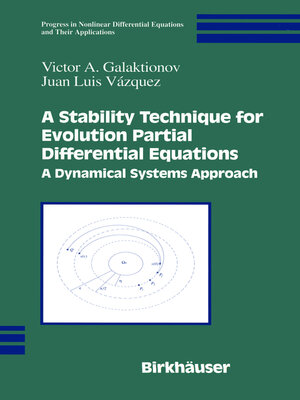A Stability Technique for Evolution Partial Differential Equations
ebook ∣ A Dynamical Systems Approach · Progress in Nonlinear Differential Equations and Their Applications
By Victor A. Galaktionov

Sign up to save your library
With an OverDrive account, you can save your favorite libraries for at-a-glance information about availability. Find out more about OverDrive accounts.
Find this title in Libby, the library reading app by OverDrive.



Search for a digital library with this title
Title found at these libraries:
| Library Name | Distance |
|---|---|
| Loading... |
common feature is that these evolution problems can be formulated as asymptoti cally small perturbations of certain dynamical systems with better-known behaviour. Now, it usually happens that the perturbation is small in a very weak sense, hence the difficulty (or impossibility) of applying more classical techniques. Though the method originated with the analysis of critical behaviour for evolu tion PDEs, in its abstract formulation it deals with a nonautonomous abstract differ ential equation (NDE) (1) Ut = A(u) + C(u, t), t > 0, where u has values in a Banach space, like an LP space, A is an autonomous (time-independent) operator and C is an asymptotically small perturbation, so that C(u(t), t) ~ ° as t ~ 00 along orbits {u(t)} of the evolution in a sense to be made precise, which in practice can be quite weak. We work in a situation in which the autonomous (limit) differential equation (ADE) Ut = A(u) (2) has a well-known asymptotic behaviour, and we want to prove that for large times the orbits of the original evolution problem converge to a certain class of limits of the autonomous equation. More precisely, we want to prove that the orbits of (NDE) are attracted by a certain limit set [2* of (ADE), which may consist of equilibria of the autonomous equation, or it can be a more complicated object.







